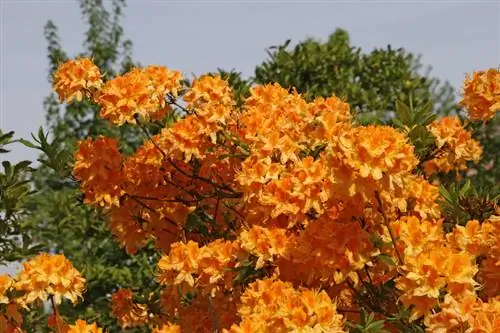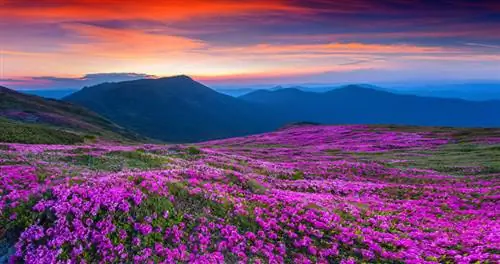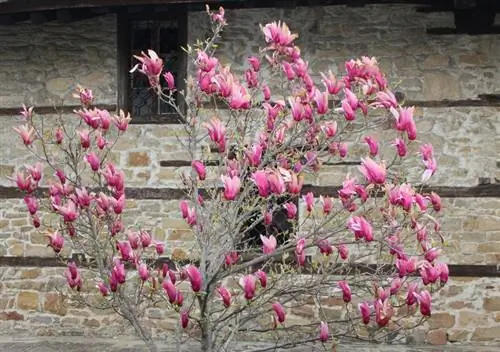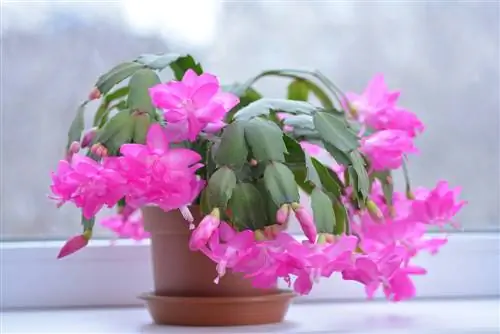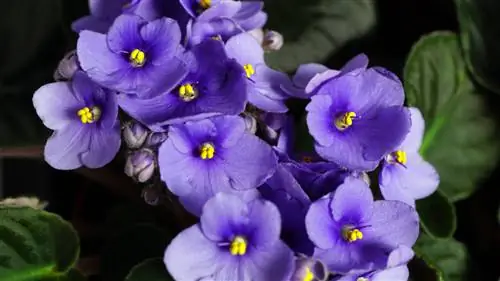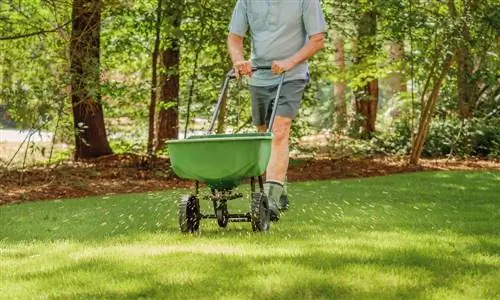- Author admin [email protected].
- Public 2023-12-16 16:46.
- Last modified 2025-06-01 06:02.
Plants don't just live on water and carbon dioxide. They also need nutrients. Even if the nutrient dosage is minimal, you will quickly see a nutrient deficiency: leaves change color and the plant withers.
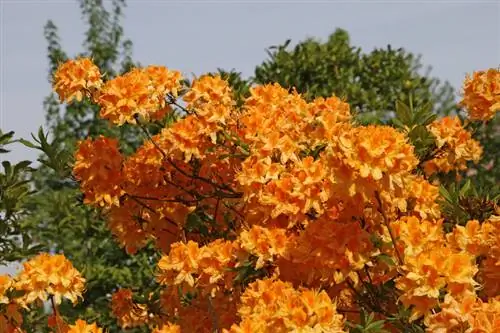
What fertilizers should you use for rhododendrons?
A combination of mineral and organic fertilizer is particularly recommended for optimal growth conditions and flower formation.
Here are the four most important rhododendron fertilizers
- Mineral fertilizer Blaukorn Entec
- Organic complete fertilizer
- Horn shavings
- Cattle dung
First test then fertilize
Before fertilizing, test the pH value of the soil using universal indicator paper. This is how you prevent over-fertilization and know whether more or less rhododendron fertilizer is needed.
Mineral fertilizer or organic fertilizer?
As shallow-rooted rhododendrons cannot use nutrients from deeper soil layers. If you want them to bloom profusely, they must be fed properly. The combination of mineral complete fertilizer such as Blaukorn Entec (€8.00 on Amazon) and an organic fertilizer has proven to be ideal. The blue grain works for two to three months. The amount depends on the plant size. In addition to the complete fertilizer, distribute the same amount of coarse horn shavings loosely among the plants. The coarser the horn shavings are, the longer they last. Additionally add kieserite to ensure the magnesium supply. Since rhododendrons are very sensitive to s alt, fertilizers containing chloride should be avoided or used rarely. Seasoned, well-rotted cattle manure is suitable for fertilizing older rhododendrons. Young rhododendrons under one meter cannot tolerate it. Since rainwater quickly washes out the cattle manure, you should not do without mineral fertilizer.
Artificial fertilizer blue grain - use and dosage
When using blue grain in the garden, caution is advised so as not to over-fertilize the rhododendron. Distribute blue grain in small pinches on the soil under the ornamental shrub, as the nutrients and s alts concentrate in the soil area. Use blue grain as fertilizer during the growth and vegetation phase in spring. In the growth phase, the plants convert the minerals more quickly and utilize them more quickly. Water plants well so that the s alts dissolve and are transported through the roots. Or add the blue grain beads directly into the irrigation water. An amount of 5 grams per 10 liters of water is sufficient for fertilization during the growth phase. Do not treat young plants with blue grain. The delicate roots are quickly attacked and the plants die.
Rhododendron substrate
This special soil with a low pH value is specially tailored to the needs of popular ericaceous plants such as rhododendrons. Enriched with fertilizer, it provides the plants with nutrients for up to three months. Including additional iron for green, robust leaves and more flowers. Place the plant in the middle of the planting hole. Make sure the roots can spread. Fill the planting hole with rhododendron substrate. Now tamp down the soil and water - done.
Tips & Tricks
Use organic fertilizers in the garden if possible. This means you only recycle the nutrients that are already present in the nutrient cycle. Only use mineral fertilizer if your rhododendron suffers from an acute nutrient deficiency and needs more care. When fertilizing, it is important to adhere to the manufacturer's exact quantities, which can vary.

